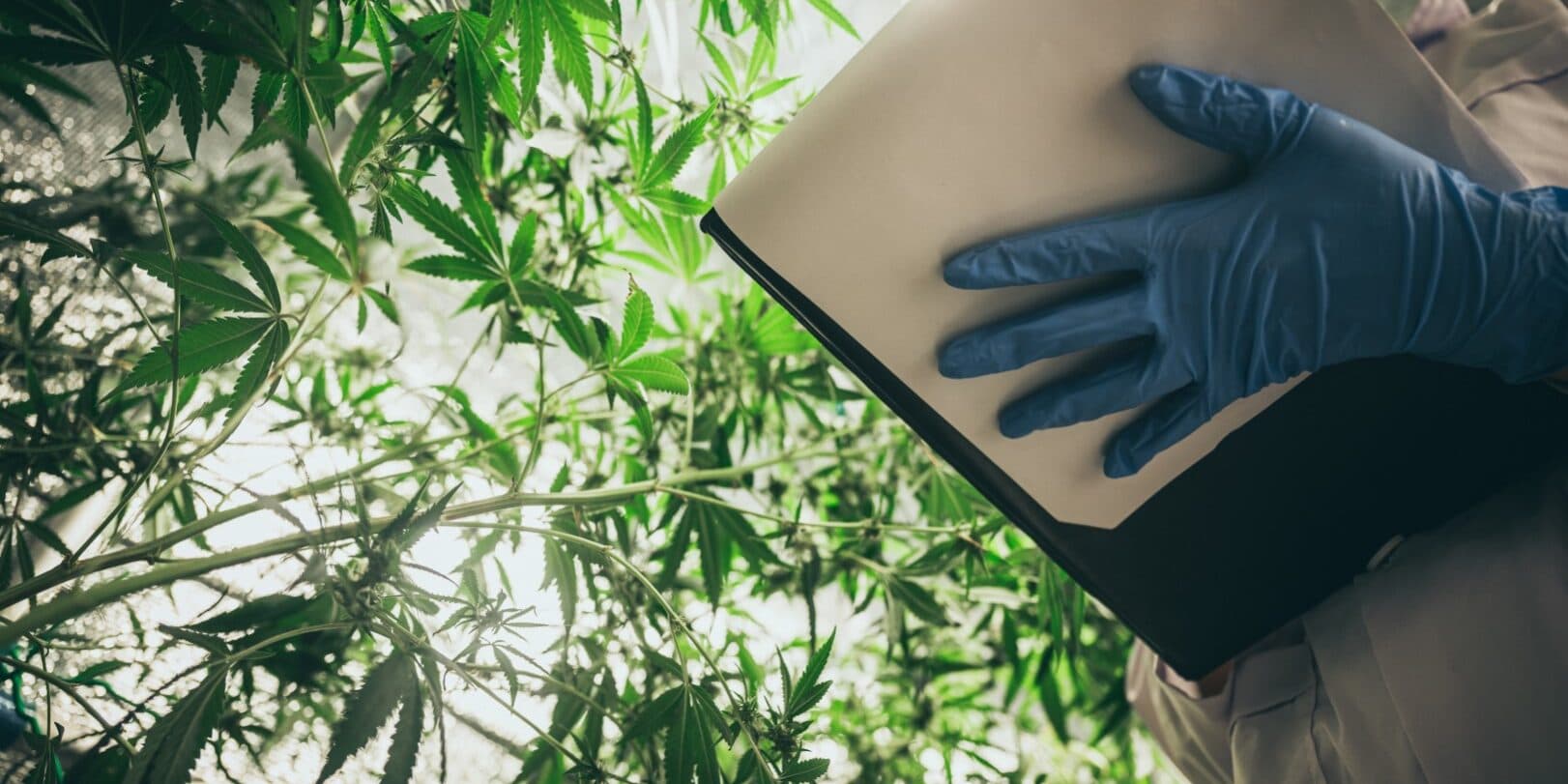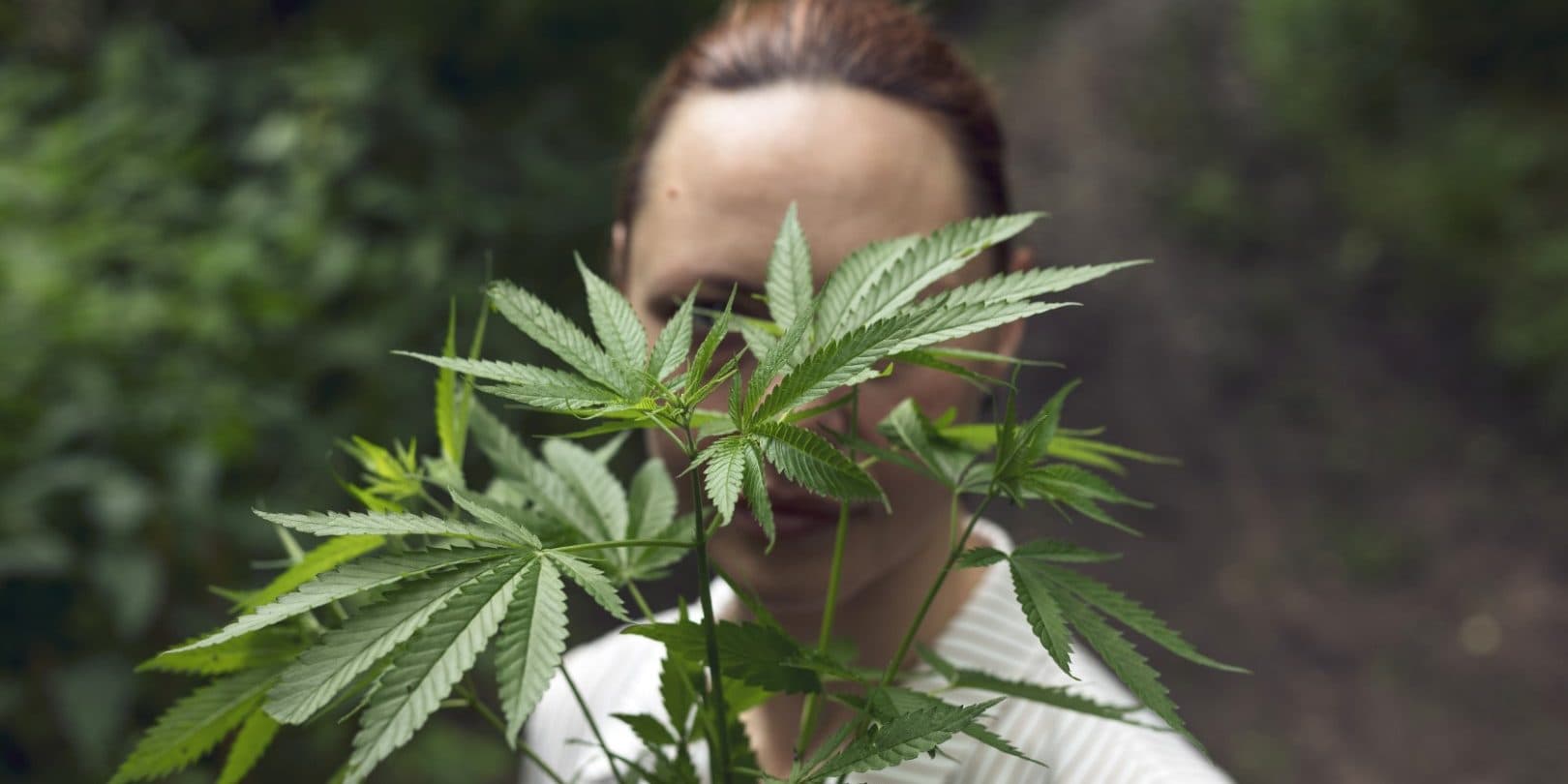Powered by Buddy
Menu
Powered by Buddy
Powered by Buddy
Menu
Powered by Buddy
How do you want to shop?
Blogs
How Recreational Cannabis Legalization Will Affect the Arizona Economy
by All Greens Dispensary | June 8, 2025

The world of legalized cannabis has never looked more promising than it does today. Cannabis has been completely legalized in 16 states and Washington DC. An additional 36 states have also passed legalized medical marijuana. For the first time in our nation’s history, the vast majority of Americans have access to legal cannabis products to support their wellness efforts. Recreational cannabis sales began in early 2021 for Arizona and residents within the state are already seeing promising returns. Let’s take a closer look at how recreational cannabis will continue to impact Arizona’s economy. One of the leading reasons for the excitement surrounding the realm of legalized weed is the job prospects that the industry has to offer. A study by Forbes in 2020 revealed projected industry growth up top 33% in 2021. While the COVID-19 pandemic certainly stalled growth to some extent, cannabis still outperformed expectations in a year when every industry struggled. Creating jobs for local businesses and individuals across the state is another huge benefit of legalized cannabis. From cultivation and manufacturing jobs to person-facing work as a Budtender or Delivery Driver, new job reports in Arizona will be fascinating to watch as the legalized industry settles in and extends its roots. According to a jobs report published by Leafly in 2020, the state of Massachusetts saw more than 13,000 new full-time jobs since cannabis was legalized in 2018. Along with these long-term positions, the state also saw more than $700 million in earnings throughout 2020. According to research compiled by the Pew Research Center, nearly 91% of U.S. adults favor marijuana legalization for medical use. An additional 60% of responders supported complete marijuana legalization. We say that to say this, the cannabis industry is entirely accepted by the public and capable of bringing in new jobs while bolstering the economy. In the first full year of legalized recreational cannabis, Illinois weed salesexceeded $1 Billion in earnings. In Arizona, an excise tax of 16% will be levied against all recreational marijuana sales. This additional tax funding was put in place by the Joint Legislative Budget Committee. A survey by Smart and Safe Arizona would reveal that estimated earnings through recreational cannabis could exceed $300 million each year. As Arizona stares down a budget deficit, this could be a major financial initiative to find solutions. Among the income generated by recreational cannabis sales, residents of Arizona can expect nearly 33% to end up funding community colleges. Another 31% of anticipated recreational cannabis sales will see taxes diverted to both police and fire departments, boosting law enforcement efforts along the way. All Greens Dispensary is nestled on the corner of Bell Road and 99th Avenue in the Sun City’s Sun Shadow Square Plaza. The first drive-through dispensary in Arizona, All Greens specializes in concentrates, vapes, edibles, and flower products. Open daily from 7 am to 10 pm, All Greens also offers new patient discounts and daily specials. More than just a dispensary for recreational cannabis and CBD products, All Greens Dispensary can help patients connect with the wellness products they need to live better. Contact All Greens Dispensary today for an affordable MMJ Certification & Patient Consultation.Cannabis Brings Local and Statewide Jobs
Balancing the Budget With Cannabis
About All Greens Dispensary

Marijuana and Dreams: Understanding the Impact of Cannabis on Sleep Patterns and Dream Recall
Cannabis has long been associated with its potential effects on sleep. Many people turn to marijuana to help with insomnia, stress relief, or simply to unwind after a long day. However, one intriguing aspect of cannabis use is its impact on sleep patterns and dream recall. In this article, we’ll explore how marijuana influences different sleep stages and how it may affect the way we remember our dreams. Cannabis has been used for centuries to aid with sleep-related issues. Its primary components, tetrahydrocannabinol (THC) and cannabidiol (CBD), interact with the body’s endocannabinoid system, which plays a vital role in regulating sleep, mood, and other physiological functions. Here’s how marijuana affects various sleep stages: REM sleep is the phase of the sleep cycle when we experience the most vivid dreams. Studies have shown that THC can reduce the time spent in REM sleep, leading to fewer dreams or less vivid dream recall. This effect is often why individuals who use cannabis regularly may report not dreaming as much or at all. THC, the psychoactive component of marijuana, is known to increase the duration of slow-wave sleep (deep sleep). This stage is crucial for physical restoration, healing, and the body’s overall recovery process. Many cannabis users claim they feel more rested after using marijuana because of this increase in deep sleep. However, this shift can come at the expense of REM sleep, altering the natural sleep cycle. Unlike THC, CBD is not psychoactive and can have a different impact on sleep. CBD has been associated with promoting wakefulness during the day, which can help establish a more regular sleep-wake cycle. Some studies suggest that CBD can reduce anxiety and improve sleep quality without significantly altering sleep stages, making it an option for those seeking sleep benefits without impacting dream recall. Regular cannabis use can significantly affect dream recall due to its influence on REM sleep. Because marijuana reduces the amount of time spent in REM, it can also reduce the frequency and vividness of dreams. Many users report a phenomenon known as “REM rebound” when they stop using cannabis. This rebound effect can lead to intense and vivid dreaming, as the body tries to compensate for the lack of REM sleep during regular use. When someone who regularly uses cannabis stops, they may experience an increase in the amount and intensity of REM sleep. This can result in vivid, often bizarre dreams. This REM rebound is temporary, lasting a few days to a few weeks, depending on the individual’s usage habits. For some, this surge in dream activity can be unsettling, while others may find it fascinating or enlightening. Occasional cannabis users might not notice a significant change in their dream recall. However, with regular use, the suppression of REM sleep becomes more apparent. It’s worth noting that the impact on dreams can vary depending on the strain, dosage, and individual sensitivity to cannabis. Many turn to marijuana as a sleep aid due to its calming and sedative effects. However, its impact on the sleep cycle and dream patterns comes with both advantages and disadvantages. Easier Falling Asleep: Cannabis can reduce the time it takes to fall asleep, especially for those struggling with anxiety or insomnia. Altered Sleep Cycle: Regular use of marijuana can disrupt the natural balance between REM and non-REM sleep, potentially impacting cognitive functions like memory consolidation. For those using cannabis to aid with sleep, it’s important to find the right balance. Experimenting with different strains and dosages can help identify what works best without overly compromising REM sleep. Indica strains are typically known for their sedative effects, while sativa strains may have a more stimulating impact, potentially affecting sleep differently. Additionally, timing plays a crucial role. Consuming cannabis too close to bedtime may lead to excessive REM suppression, while using it earlier in the evening might allow the body to progress through a more balanced sleep cycle. Yes, you can still dream while using cannabis, though your ability to recall those dreams may be diminished. For some, the absence of vivid dreams is a welcome relief, especially if they previously experienced nightmares. For others, the lack of dream activity may feel like a loss of a vital part of their sleep experience. Moderate Use: Consider using lower doses or limiting cannabis consumption to avoid significant REM suppression. At All Greens Dispensary, we understand the various ways cannabis can impact sleep. Our knowledgeable staff can help guide you toward strains and products tailored to your sleep needs, whether you’re seeking relaxation, relief from insomnia, or simply a more restful night’s sleep. Explore our range of products and find your perfect sleep aid. Cannabis can be a powerful tool for enhancing sleep, but it’s important to be aware of its effects on your dream patterns and overall sleep quality. By understanding how marijuana interacts with the sleep cycle, you can make informed choices that best suit your individual needs. For expert advice and a wide selection of quality cannabis products, contact All Greens Dispensary today.How Cannabis Affects Sleep Patterns
Impact on Rapid Eye Movement (REM) Sleep
Influence on Deep Sleep (Slow-Wave Sleep)
CBD’s Role in Sleep Regulation
Marijuana and Dream Recall
REM Rebound: What Happens When You Stop Using Cannabis
Occasional vs. Regular Use
Pros and Cons of Cannabis-Induced Sleep
Pros
Deeper Sleep: Increased slow-wave sleep can lead to a more physically restorative sleep cycle, allowing the body to repair and rejuvenate.
Reduced Nightmares: For individuals with conditions like PTSD, reducing REM sleep can mean fewer or less intense nightmares.Cons
Dream Suppression: A decrease in REM sleep can result in reduced dream recall, which may affect those interested in exploring their dreams or using dreams for emotional processing.
REM Rebound: Sudden cessation after prolonged use can lead to intense dreaming, which some users find overwhelming.Finding the Right Balance for Better Sleep
Can You Dream with Cannabis?
Tips for Those Seeking Dream Recall While Using Cannabis
CBD-Rich Strains: Opt for strains higher in CBD, as they may provide relaxation benefits without heavily impacting REM sleep.
Mindfulness and Sleep Journaling: Engaging in relaxation practices and keeping a sleep journal can help with dream recall and awareness, even when using cannabis.Discover Your Sleep Solution at All Greens Dispensary
Unlock the Secrets of Your Sleep
All Green Dispensary
June 5, 2025

Marijuana and Productivity: Balancing Work and Leisure with Cannabis Use
Cannabis has a reputation for its relaxing and calming effects, but can it also be used to enhance productivity? For some individuals, marijuana offers a way to find a balance between work and leisure by reducing stress, enhancing focus, and even sparking creativity. However, using cannabis to support productivity requires a mindful approach and understanding how different strains and dosages affect your body and mind.
In this article, we’ll explore how marijuana can be used to boost productivity, strategies for balancing cannabis use with work and leisure, and considerations for finding the right approach to fit your lifestyle.
The Connection Between Marijuana and Productivity
The impact of cannabis on productivity can vary significantly depending on the type of strain used, the amount consumed, and the individual’s tolerance. Understanding these variables is crucial for making cannabis a part of a balanced routine that supports both work performance and relaxation.
Sativa vs. Indica Strains
Cannabis strains are typically classified into three categories: sativa, indica, and hybrid. Each type has distinct effects that can influence productivity:
Sativa Strains: Known for their uplifting and energizing effects, sativa strains are often associated with increased creativity, focus, and motivation. These strains can be beneficial for tackling tasks that require concentration and brainstorming.
Indica Strains: Indica strains tend to have a more calming and relaxing effect, making them ideal for unwinding after work. While they may not be suitable for tasks that require intense focus, they can help with stress relief and rest.
Hybrid Strains: Hybrids combine characteristics of both sativa and indica strains, offering a more balanced effect. These strains can be tailored to provide the right mix of relaxation and mental clarity, depending on the desired outcome.
Microdosing for Enhanced Focus
Microdosing involves consuming very small amounts of cannabis to achieve subtle effects without feeling “high.” This approach can be particularly effective for those who want to use cannabis to enhance productivity while maintaining mental clarity. Microdosing sativa-dominant strains, for instance, may help stimulate creativity and focus without causing drowsiness or distraction.
Using Cannabis to Manage Stress and Anxiety
For many people, work-related stress and anxiety can be significant barriers to productivity. In these cases, cannabis may help by promoting relaxation and reducing stress levels. CBD-rich strains are especially helpful for calming the mind without impairing cognitive function, making them suitable for daytime use.
Cannabis Use Strategies for Boosting Productivity
If you’re considering using cannabis to support your productivity, it’s important to approach it with a plan. Here are some strategies for integrating cannabis into your routine in a way that enhances productivity rather than hindering it:
Time Your Cannabis Use Carefully
Timing is crucial when using cannabis to balance work and leisure. For instance, using a sativa strain in the morning or early afternoon can help kickstart your day, while an indica strain in the evening can aid in unwinding after a busy day. Avoid using sedating strains during work hours, as they may reduce your ability to focus.
Set Intentions Before Using Cannabis
Before consuming cannabis, set a clear intention for what you hope to achieve. If you’re using it to enhance focus and creativity, choose a strain and dosage that aligns with that goal. On the other hand, if you’re seeking stress relief after work, you might opt for a relaxing indica strain.
Combine Cannabis with Other Productivity Techniques
Cannabis can complement other productivity techniques, such as using a to-do list, practicing the Pomodoro technique (working in short bursts with breaks in between), or engaging in mindfulness practices. Pairing cannabis use with these techniques can help structure your day and maintain a healthy balance between productivity and relaxation.
The Pros and Cons of Using Marijuana for Productivity
While marijuana can provide certain benefits for productivity, it’s important to be aware of potential drawbacks and limitations. Here’s a breakdown of the pros and cons of using cannabis to support work and leisure balance:
Pros
Enhanced Creativity: Many users report that cannabis helps unlock creative thinking, making it a valuable tool for artists, writers, and professionals in creative fields.
Stress Relief: Cannabis can help reduce stress and anxiety, allowing for a more focused and calm state of mind.
Increased Focus (with Microdosing): Small doses of the right strain can improve concentration and task management without causing overwhelming effects.
Cons
Risk of Overuse: Consuming too much cannabis can impair cognitive function, reduce motivation, and hinder productivity. It’s important to use cannabis in moderation.
Short-Term Memory Effects: Cannabis use, especially strains high in THC, can impact short-term memory, which may affect tasks that require detailed recall.
Sedative Effects: Using cannabis strains with strong sedative properties during the day can lead to drowsiness, making it difficult to stay productive.
Balancing Work and Leisure with Cannabis
Finding a balance between work and leisure is essential for maintaining overall well-being. Cannabis can play a role in this balance by helping to separate work time from relaxation. Here are some ways to use cannabis to support a healthy work-life balance:
Create a Clear Transition Between Work and Leisure
After a long day, it’s helpful to establish rituals that signal the end of the workday. Using a calming cannabis strain as part of your evening routine can help create a clear distinction between work time and personal time. This transition can aid in reducing stress and promoting a healthy mindset for the next day.
Use Cannabis to Support Leisure Activities
Cannabis can enhance leisure activities such as exercise, yoga, or creative hobbies. For instance, using a sativa strain before engaging in physical activities can boost energy and motivation, while an indica strain might be more suitable for relaxation-based activities like reading or meditation.
Practice Mindfulness When Using Cannabis
When incorporating cannabis into your routine, do so mindfully. Pay attention to how different strains and doses affect your productivity and mood. Keeping a journal to track your experiences can help you identify what works best for your needs.
Explore Cannabis Options at All Greens Dispensary
At All Greens Dispensary, we offer a wide variety of cannabis products that can help you find the right balance between productivity and relaxation. Our knowledgeable staff can guide you in choosing strains that support your work and leisure goals, whether you’re looking for an energizing sativa, a calming indica, or a balanced hybrid. Explore our selection and learn more about how cannabis can fit into your productivity and wellness routine.
Achieving a Balanced Approach to Cannabis Use
Marijuana has the potential to support productivity and well-being when used thoughtfully and in moderation. By understanding the effects of different strains, setting intentions, and integrating cannabis into your daily routine, you can find a balance that allows you to be productive during work and relaxed during leisure. For expert advice and a wide selection of quality cannabis products, contact All Greens Dispensary and start exploring your path to a balanced lifestyle today.
All Green Dispensary
June 5, 2025

Understanding Marijuana Tolerance: How It Develops and What It Means
As the use of marijuana becomes more widespread and accepted, understanding how it affects the body and how tolerance develops is crucial for both new and experienced users. Marijuana tolerance can impact the effectiveness of cannabis and influence how much and how often you consume it. At All Greens Dispensary, we believe in educating our customers about all aspects of cannabis use, including tolerance. Here’s a detailed look at how marijuana tolerance develops and what it means for you. Marijuana tolerance refers to a reduced response to cannabis after repeated use. This means that over time, you may need to consume larger amounts of marijuana to achieve the same effects you experienced initially. Tolerance develops because of changes in the brain’s endocannabinoid system, which is responsible for mediating the effects of THC (tetrahydrocannabinol), the primary psychoactive compound in cannabis. Marijuana tolerance develops through several biological mechanisms: THC interacts with the CB1 receptors in the brain, producing the psychoactive effects of cannabis. With repeated exposure to THC, the body compensates by reducing the number of CB1 receptors available—a process known as downregulation. Fewer receptors mean that the same amount of THC has less effect, leading to tolerance. In addition to downregulating CB1 receptors, chronic cannabis use can also lead to the desensitization of these receptors. This means that the receptors become less responsive to THC, requiring higher doses to achieve the desired effects. The body can also develop metabolic tolerance, where it becomes more efficient at breaking down and eliminating THC. This results in THC being less available to interact with CB1 receptors, necessitating higher doses to feel the same effects. Several factors can influence how quickly and to what extent marijuana tolerance develops: The more frequently you use marijuana, the faster tolerance is likely to develop. Regular daily use can lead to significant tolerance over time, while occasional use might result in slower tolerance development. Higher potency cannabis products with greater THC content can accelerate the development of tolerance. Using strong strains or concentrates regularly can lead to a quicker increase in tolerance compared to lower potency options. Each person’s body reacts differently to cannabis. Factors such as genetics, metabolism, overall health, and even mental state can influence how quickly tolerance develops. Some people may develop tolerance rapidly, while others might not experience it as significantly. Understanding how tolerance develops is important for managing your cannabis use effectively. Here are some strategies to manage and reset your tolerance: One of the most effective ways to reset your tolerance is by taking a break from cannabis use, often referred to as a “tolerance break” or “T-break.” A break of even a few days can help reduce tolerance levels, and a longer break can significantly reset your sensitivity to THC. Rotating different cannabis strains with varying levels of cannabinoids can help prevent the rapid development of tolerance. This approach keeps the endocannabinoid system engaged and responsive by avoiding consistent exposure to the same THC levels. Products that contain a balanced ratio of THC and CBD (cannabidiol) can help manage tolerance. CBD can modulate the effects of THC and may reduce the rate at which tolerance develops. Using cannabis in moderation can help prevent the rapid buildup of tolerance. Instead of consuming large quantities regularly, try smaller doses and less frequent use to maintain effectiveness without significantly increasing tolerance. Understanding and managing marijuana tolerance has several important implications: Higher tolerance means you need more cannabis to achieve the same effects, which can become costly over time. Managing tolerance helps you use cannabis more efficiently, reducing the amount needed and saving money. Consuming large amounts of cannabis to overcome tolerance can increase the risk of side effects, such as anxiety, paranoia, and cognitive impairment. Managing tolerance ensures you can enjoy the benefits of cannabis while minimizing potential risks. By managing your tolerance, you can maintain the effectiveness of cannabis and continue to experience its therapeutic and recreational benefits. A lower tolerance often means a more enjoyable and predictable experience. At All Greens Dispensary, we are dedicated to helping our customers make informed decisions about their cannabis use. Understanding how marijuana tolerance develops and learning to manage it can enhance your overall experience and ensure that you continue to enjoy the benefits of cannabis safely and effectively. Whether you’re a new user or an experienced enthusiast, our knowledgeable staff is here to provide guidance and support every step of the way. For more information or personalized advice on managing marijuana tolerance, visit All Greens Dispensary at our Sun City or Quartzsite locations, or reach out to us online. Let us help you achieve the best possible cannabis experience.What is Marijuana Tolerance?
How Does Marijuana Tolerance Develop?
Downregulation of CB1 Receptors
Desensitization of CB1 Receptors
Metabolic Tolerance
Factors Influencing Marijuana Tolerance
Frequency of Use
Potency of Cannabis
Individual Differences
Managing Marijuana Tolerance
Take a Tolerance Break
Rotate Strains
Use Products with Balanced Cannabinoids
Moderate Your Use
The Implications of Marijuana Tolerance
Cost Efficiency
Health and Safety
Enhanced Experience
Embrace an Informed Approach to Cannabis Use
All Green Dispensary
June 5, 2025
Menu




